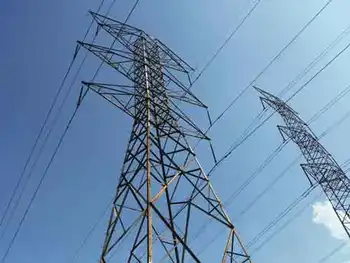Remembering the Great Ice Storm
This weekend marks the 10th anniversary of the Great Ice Storm of 1998, when much of Ontario, Quebec and Canada's east coast suffered from one of the most devastating weather events in the country's history.
From Jan.5 to Jan. 10, a number of weather patterns and conditions coincided and produced a freak storm, the likes of which had never been experienced in Canada.
"It still remains to be the granddaddy of them all," David Phillips, senior climatologist at Environment Canada, says of the legendary storm that caused an estimated $2- billion in damage.
Ottawa and Montreal, for example, normally get 45 to 65 hours of precipitation a year. During the six days of the ice storm, they received nearly double that annual total.
Freezing rain, ice pellets and wet snow fell on Eastern Canada, for hours at a time and day after day, coating the region in thick sheets of ice because of the sub-zero temperatures.
Major cities and the rural communities in between them were quite literally, frozen solid.
The weight of the ice caused the collapse of building roofs, snapped huge trees as if they were twigs, toppled more than 100 major power transmission towers and brought down 120,000 kilometres of power lines and telephone cables. Roads were blocked and people were stranded.
About four million Canadians were forced to live a pioneer life with no heat, electricity, or running water.
Catherine Alexander, a Brockville, Ont., resident was one of them. She and her family were trapped in their house for four days because downed power lines were strewn across the driveway. They used the home's fireplace to keep warm and waded past the ice in the freezing St. Lawrence River next to the house to fetch water. It was a week before they had power again.
Among her memories of the ice storm, Alexander recalls people phoning into the local radio station asking how to save their freezing goldfish. Her own family pet, a cockatoo named Chester, managed to survive the crisis.
While some could stay in their homes, an estimated 100,000 people sought refuge in shelters and others moved in with friends or relatives.
A state of emergency was declared in many communities when it became clear the storm was sticking around and that it was having dangerous and deadly effects.
Twenty-five people died as a result of the storm, many of them from hypothermia.
"It was this bizarre situation," recalls Jim Watson, Ottawa mayor at the time and now an MPP for the city. "On the one hand it was the most beautiful scene you could imagine, this glistening aura of trees and icicles but on the other hand, lives were lost, businesses were lost, people were hurt."
Gillian Baker, a volunteer with the Red Cross in 1998, recalls how the crisis brought out the best in people. She said phones at the Red Cross were ringing off the hook with people both looking for help and with those willing to provide it.
"We complain, and we honk our horns but when push comes to shove we'll help each other out," said Ms. Baker. Throughout the ice storm, the Red Cross mobilized more than 3,000 staff and volunteers in Ontario, Quebec and New Brunswick.
Ms. Baker recalls food and water being among the primary needs of the 334,000 people that the aid agency assisted.
She said the Red Cross learned valuable lessons from the ice storm experience and has recruited more volunteers, has better volunteer training and improved co-ordination with municipalities and other agencies, because of it.
The Canadian military was also called upon to help and Operation Recuperation involved the largest deployment of troops ever on Canadian soil in response to a natural disaster. More than 15,000 personnel helped evacuate people from their homes, clear roads, and provide back up for hydro crews and police forces.
The storm had enormous economic consequences and some businesses were so hard hit it took more than a decade to recover.
Quebec's maple syrup industry, for example, which produces 70% of the world's supply, was severely impacted because of the number of damaged trees. It was the same story for Ontario's producers and, according to the province's industry association, it could take 40 years before production returns to pre-1998 levels.
The Insurance Bureau of Canada reported 535,200 claims following the storm, totalling about $790-million in damage to homes, cars and other property. In fact, more individual insurance claims were made in Canada and the United States because of the ice storm than any other weather-related event in history, said Mr. Phillips.
Looking back on the storm 10 years later, Mr. Phillips draws two main conclusions: it could have been worse and it could happen again. That being said, when the Great Ice Storm's 50th anniversary arrives in 2048, Mr. Phillips predicts it will still be known as the biggest weather event in Canadian history.
"It's such a huge event that it's hard to imagine that we will have a duplication of that," he said.
Related News

Why Canada should invest in "macrogrids" for greener, more reliable electricity
OTTAWA - As the recent disaster in Texas showed, climate change requires electricity utilities to prepare for extreme events. This “global weirding” leads to more intense storms, higher wind speeds, heatwaves and droughts that can threaten the performance of electricity systems.
The electricity sector must adapt to this changing climate while also playing a central role in mitigating climate change. Greenhouse gas emissions can be reduced a number of ways, but the electricity sector is expected to play a central role in decarbonization. Zero-emissions electricity can be used to electrify transportation, heating and industry and help achieve emissions reduction in…





